Bristol Agricultural High School Campus Serves as Exemplar for Sustainable Site Design and Land Conservation
As part of the two-day virtual Architecture Boston Expo (ABX), Vesna Maneva, senior landscape architect at Halvorson | Tighe & Bond Studio participated in the panel “Water Use Reduction? Low Priority, Too Complex? Think Again!” with experts from HMFH Architects, Berkshire Design Group, and Samiotes Consulting. The panel focused on a variety of projects, including the new Bristol County Agricultural High School designed by HMFH Architects with landscape by Halvorson.
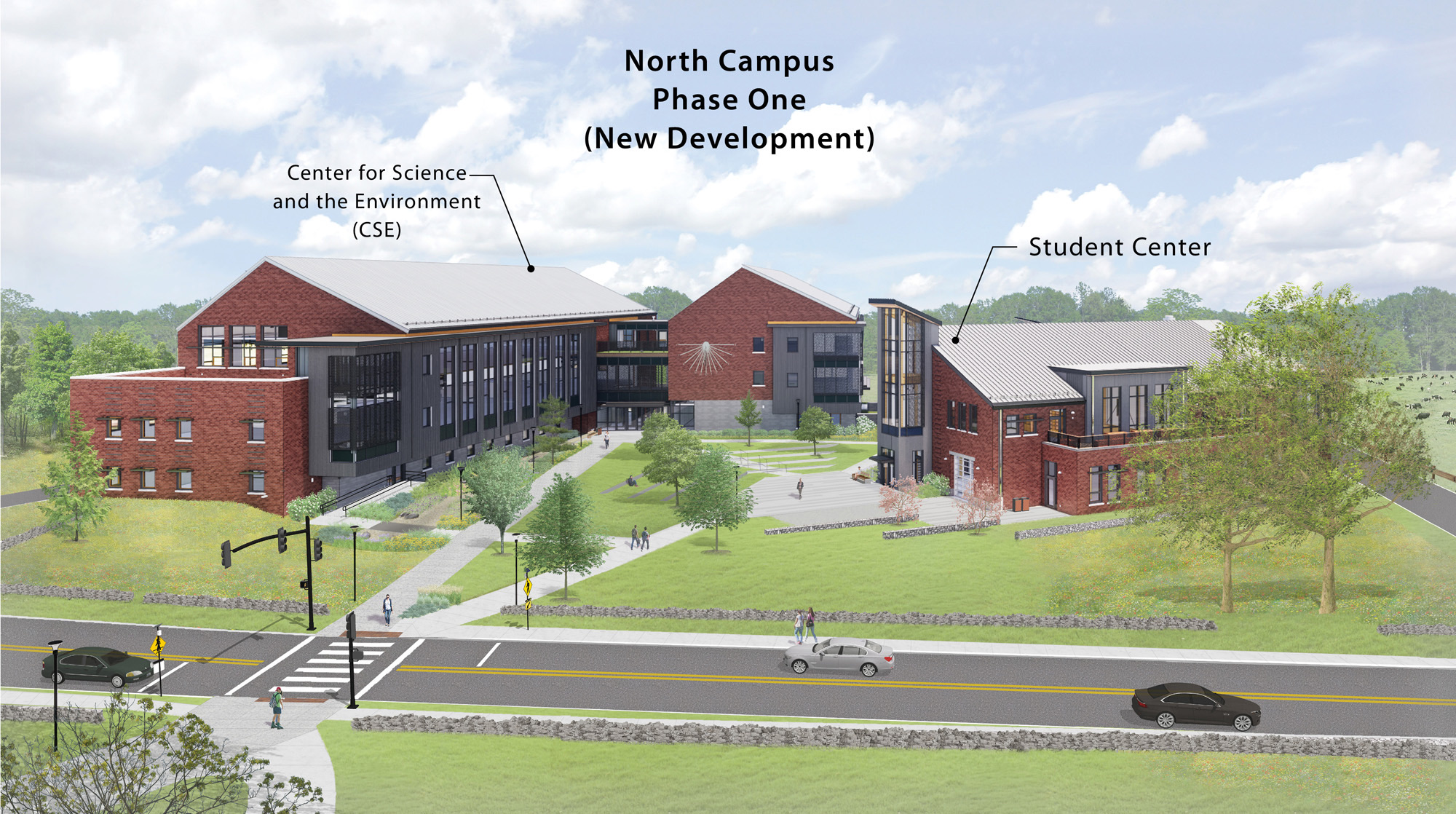
Bristol County Agricultural High School North Campus (HMFH Architects & Halvorson | Tighe & Bond Studio)
This innovative campus redesign is grounded in Bristol Aggie’s vision to be a leader in teaching sustainable land management practices and desire to be a good neighbor to the adjacent Taunton River. Striving to educate by example, the campus design introduces a series of measures to preserve the town’s water resources, by reducing the landscape’s water usage and increasing opportunities for groundwater recharge.
Contributing to the concept of the campus as an outdoor classroom, the design intentionally highlights these measures as attractive and visible educational opportunities.
Reduction of Landscape Water Use
A variety of elements were incorporated into the site and building design to reduce the amount of water needed for the landscape. These measures include green roofs, rainwater harvesting, limiting areas in need of irrigation, and water-efficient planting.
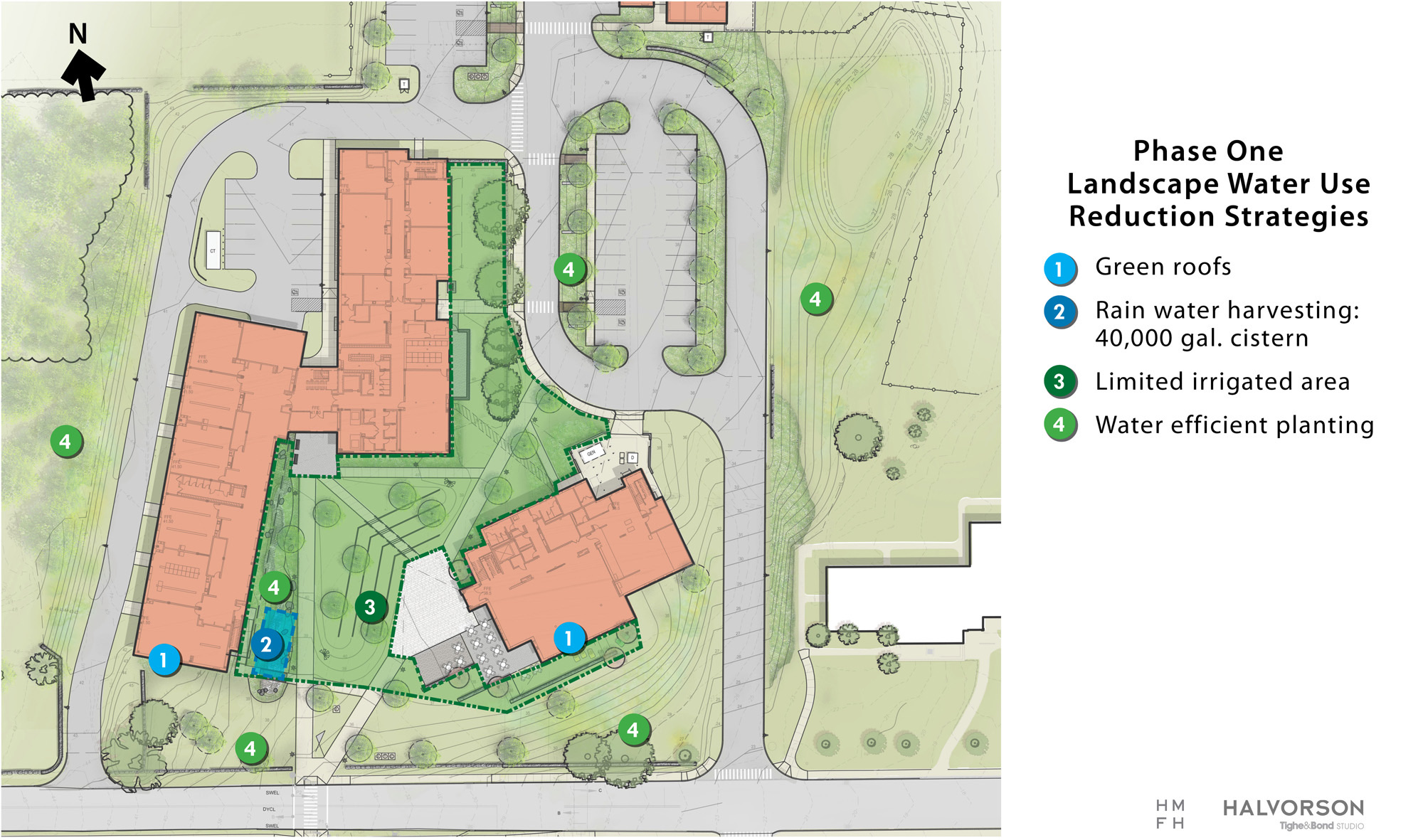
Bristol County Agricultural High School North Campus Landscape Water Use Reduction Strategies (HMFH Architects & Halvorson | Tighe & Bond Studio)
Green Roofs
There are three green roofs, one of which serves as an extension of the indoor classroom space, on the buildings of the school’s North Campus. These layered systems are designed to retain precipitation, which is used by the roof plantings, thereby reducing the amount of water the site drainage infrastructure needs to capture. Additionally, Bristol Aggie’s floriculture program will be able to use the green roof system to grow and study herbaceous plants.
Rainwater Harvesting
By capturing precipitation from the roughly 20,000-square-foot roof area into an underground cistern, Bristol Aggie will be able to meet 90% of their water needs to irrigate the core campus during the month of July, when irrigation systems are most taxed. The design team determined the optimum size for the cistern by comparing irrigation areas to cistern size and considering construction cost before arriving at an option that was both friendly to the school’s bottom line and provided adequate coverage for the limited area requiring irrigation. The 40,000-gallon underground cistern is able to store enough water to irrigate an area of 22,500 square feet in the core campus.
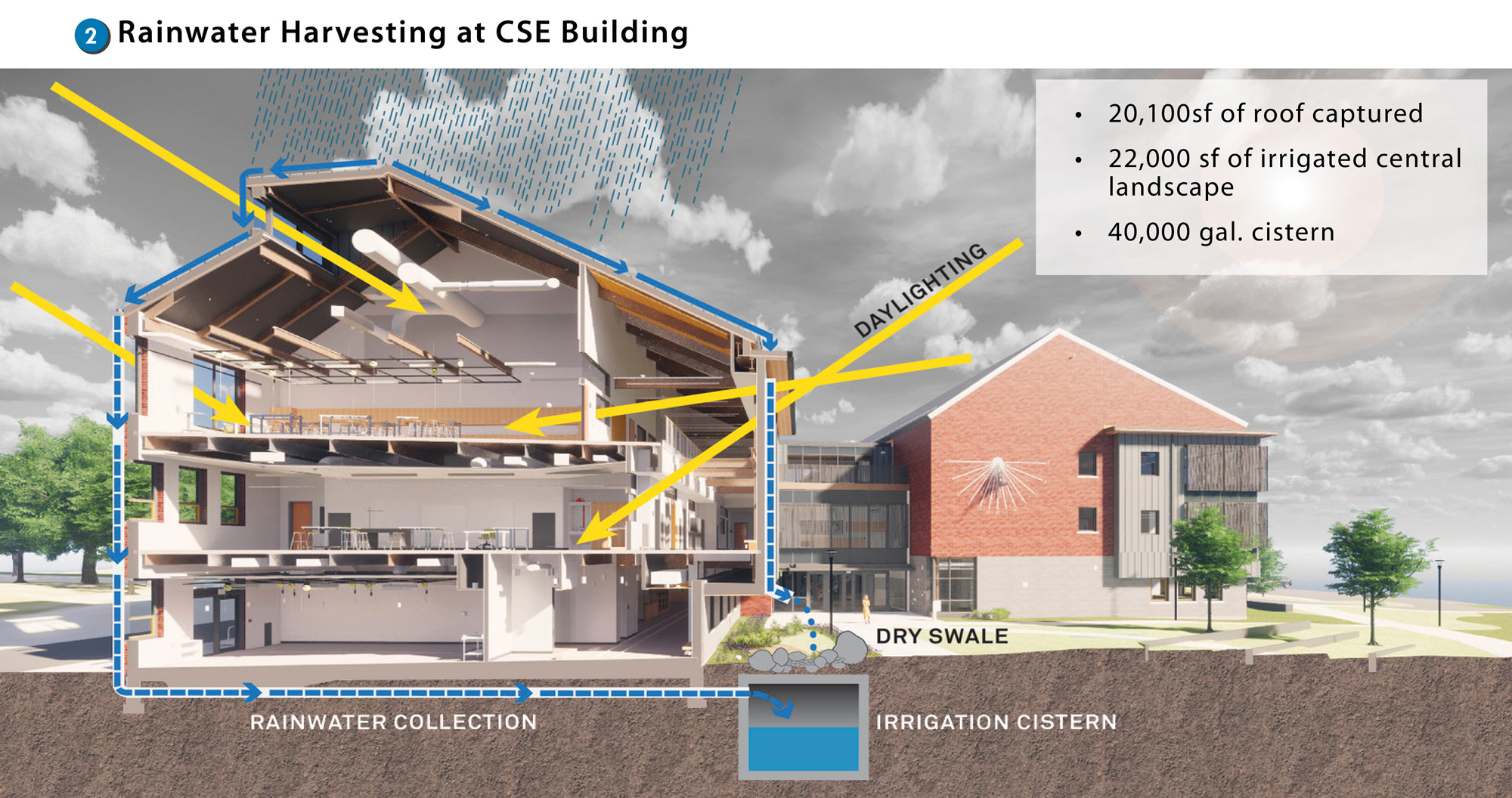
Bristol County Agricultural High School North Campus Rainwater Harvesting at CSE Building (HMFH Architects & Halvorson | Tighe & Bond Studio)
Limited Areas of Irrigation
One of the goals of the campus design was to limit areas that required irrigation to only the most prominent landscapes in the campus core. Two thirds of this area are lawn, which requires the most water but is necessary for the space to be used for outdoor gathering and as an open-air classroom. The rest of this space is populated by shrubs and perennials that have lower irrigation needs.
Water-Efficient Planting
Outside the campus core, our team focused on plantings that are able to thrive without additional watering. The Bristol Aggie campus features native meadows that are adapted to drought conditions; sturdy pasture grasses, which are integral to the school’s Animal Science program; and native plants at bioswales that can withstand periods of brief inundation and prolonged drought conditions.
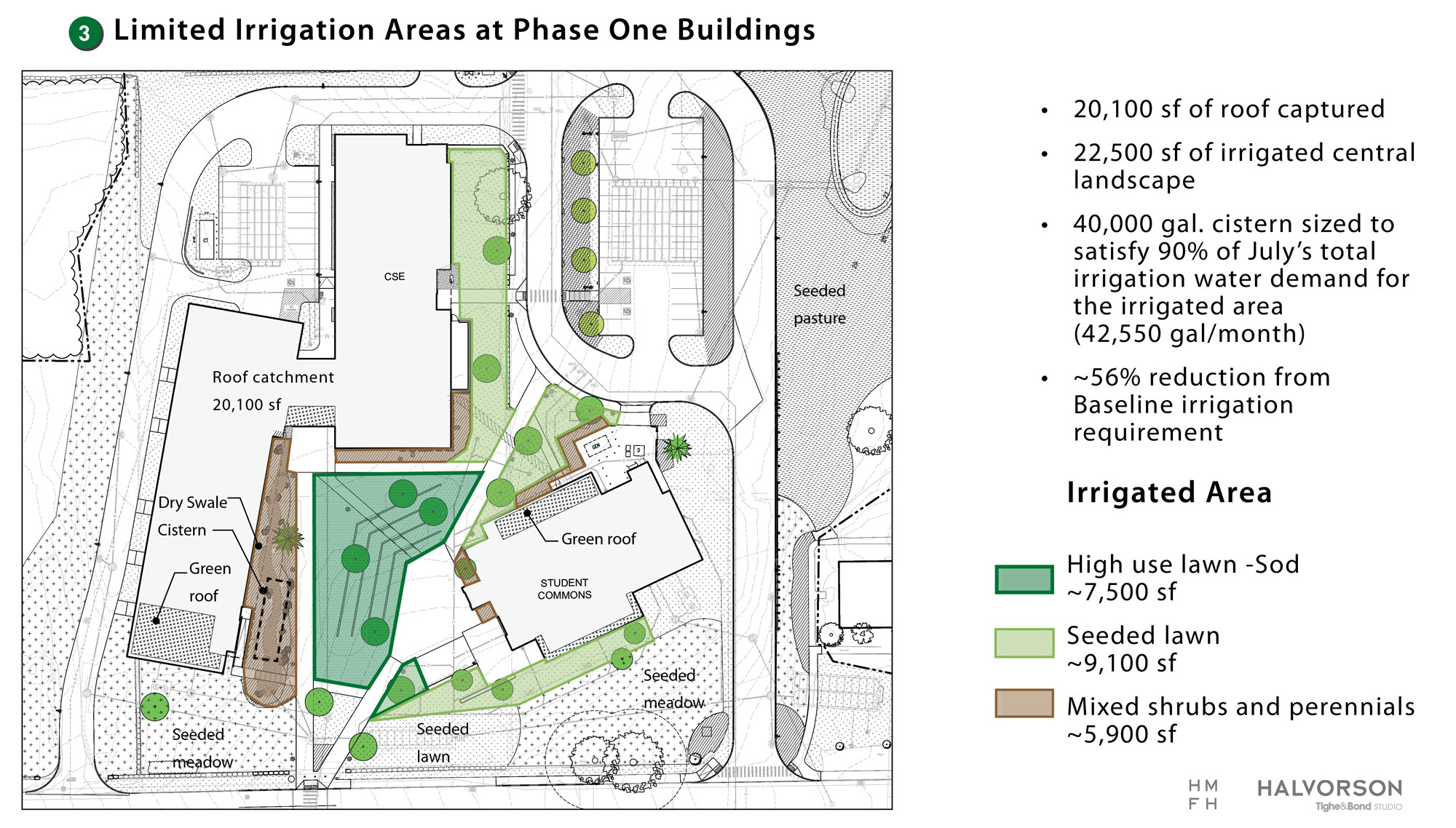
Bristol County Agricultural High School North Campus Limited Irrigation Areas (HMFH Architects & Halvorson | Tighe & Bond Studio)
Protecting the Groundwater Resources
As more communities are experiencing the impacts of climate change, reducing water usage—particularly the quantity of potable water needed to maintain the landscape—has become crucial to sustainable site design. Many cities and towns have experienced severe droughts in recent years. In response to critically low levels in their drinking water wells, this past summer the Town of Dighton, where the Bristol Aggie campus is located, placed a total ban on outside watering.
Here is where the bigger picture comes into view. It is not enough to use water efficiently; we must also replenish groundwater by infiltrating the precipitation that falls onto the ground.
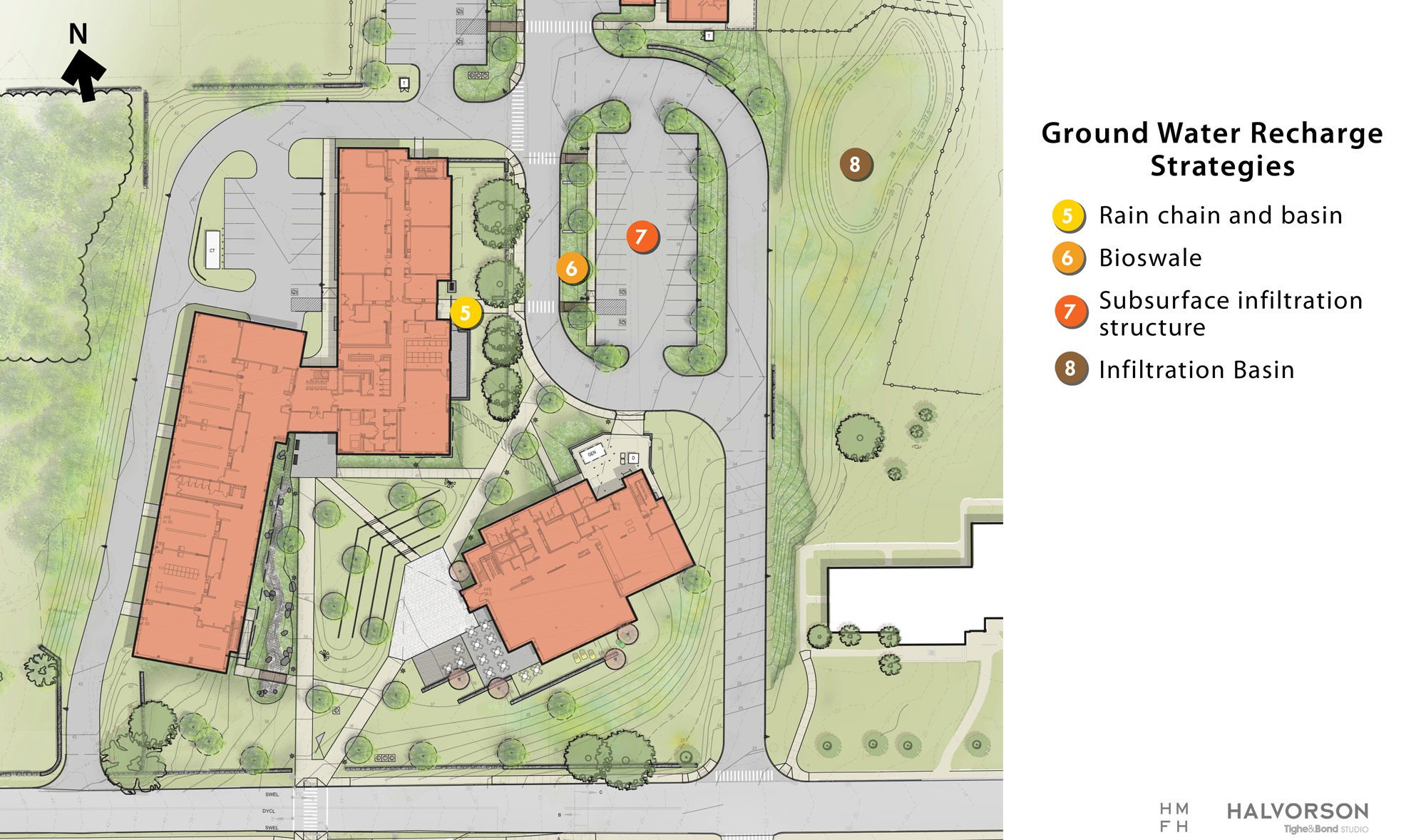
Bristol County Agricultural High School North Campus Groundwater Recharge Strategies (HMFH Architects & Halvorson | Tighe & Bond Studio)
Our landscape architects worked closely with HMFH Architects and the civil engineer, Samiotes, to incorporate several groundwater recharge measures into the Bristol Aggie campus to create a holistic system that conveys, purifies, and infiltrates the water that falls on the site’s impermeable surfaces. These measures included a rain chain and infiltration dry bed; rain gardens (bioswales); subsurface infiltration structures, and infiltration basins.
A rain chain collects precipitation from parts of the roof that could not be captured into the irrigation cistern by guiding the water into a bed of river rocks below where it can seep into the ground. During larger storms, the overflow spills into a drain to a larger raingarden/bioswale, where it joins the road runoff, which is directed into the swale via cutouts at the road curb line.
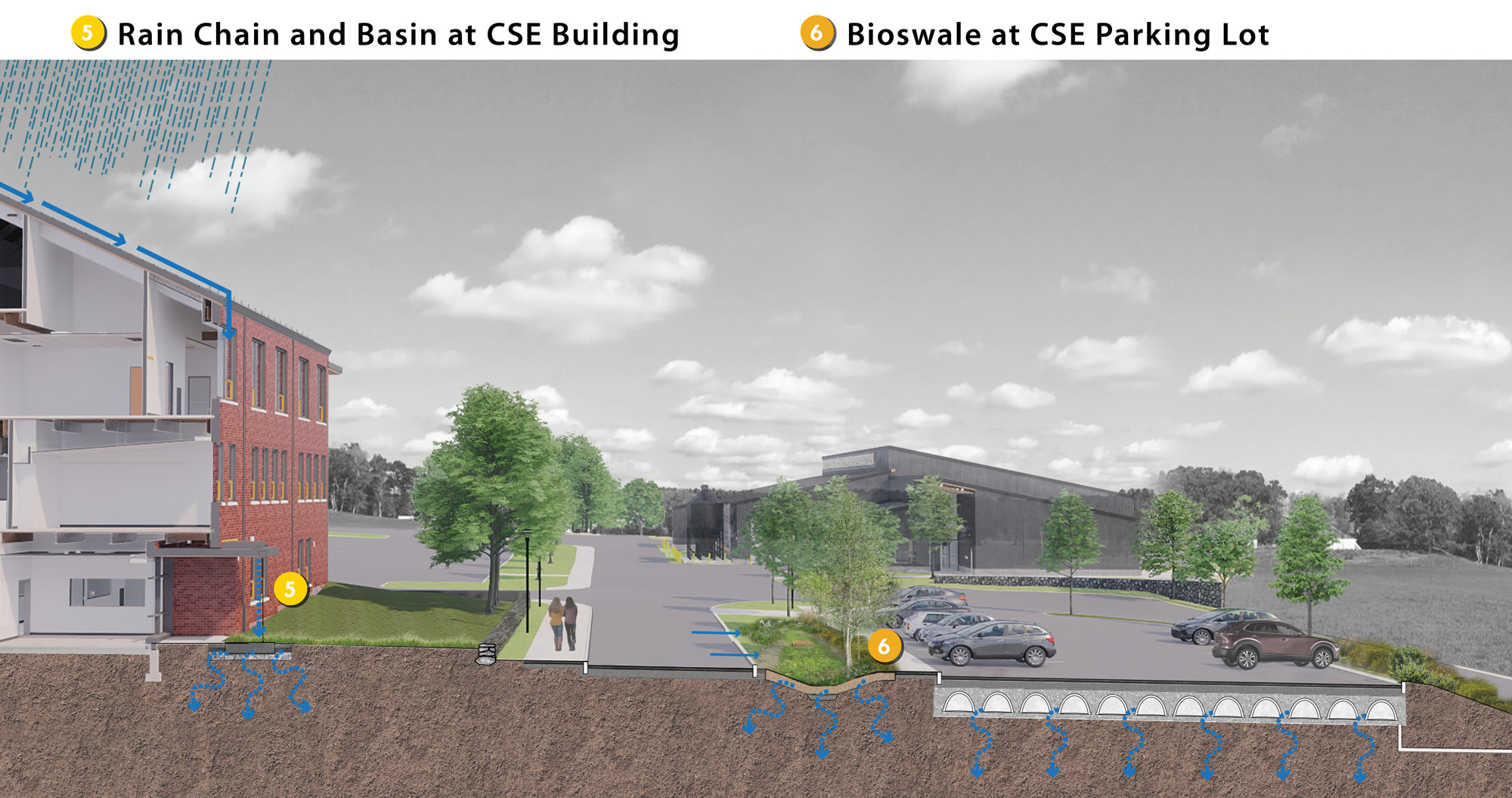
Bristol County Agricultural High School Rain Chain & Bioswale Diagram (HMFH Architects & Halvorson | Tighe & Bond Studio)
The bioswale’s planting and special soil medium purify the runoff via sediment filtration and biological action by soil organisms as the water slowly seeps into the ground. Road runoff that could not be handled by the bioswale is directed to vaulted structures under the parking lot paving, where it can infiltrate slowly or is directed to a shallow planted basin as the last in the series of infiltration measures.
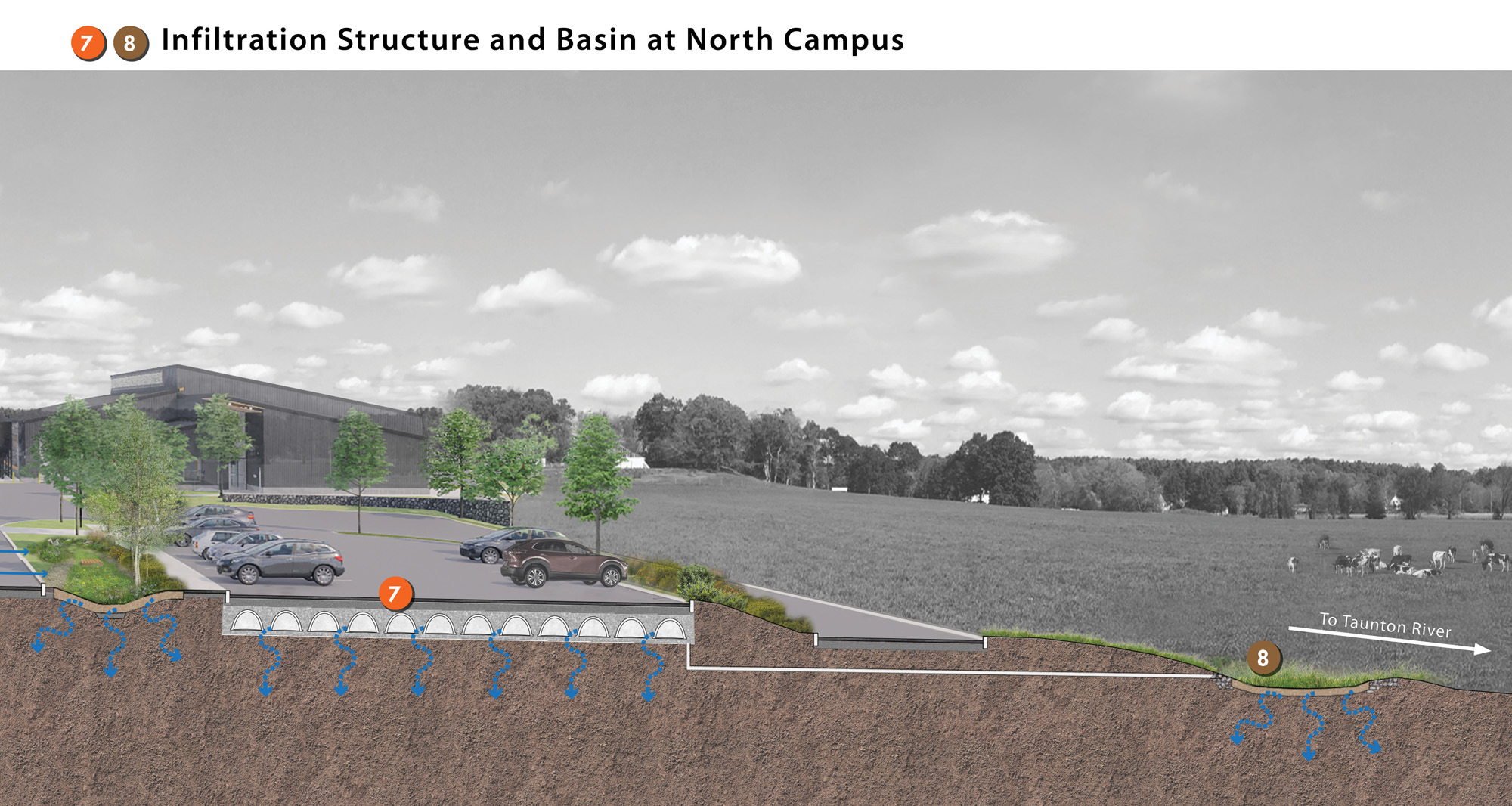
Bristol County Agricultural High School Infiltration and Basin Diagram (HMFH Architects & Halvorson | Tighe & Bond Studio)
Impacts of Sustainable Site Design
Bristol Aggie’s campus design employs a series of measures to reduce the amount of landscape water used for irrigation: roof water capture, limiting irrigation to only the most prominent areas, and selecting drought-tolerant species. The precipitation that falls onto impervious surfaces is directed into interconnected landscape-based and engineered infiltration measures to capture, cleanse, and infiltrate the runoff so that it can replenish the groundwater.
By infiltrating the site runoff, greatly reducing the amount of road salt, sediment, and excessive nutrients that are washed into the river, Bristol Aggie’s campus is contributing to the better health of the Taunton River and its ecosystem and serving as a model for sustainable site design.
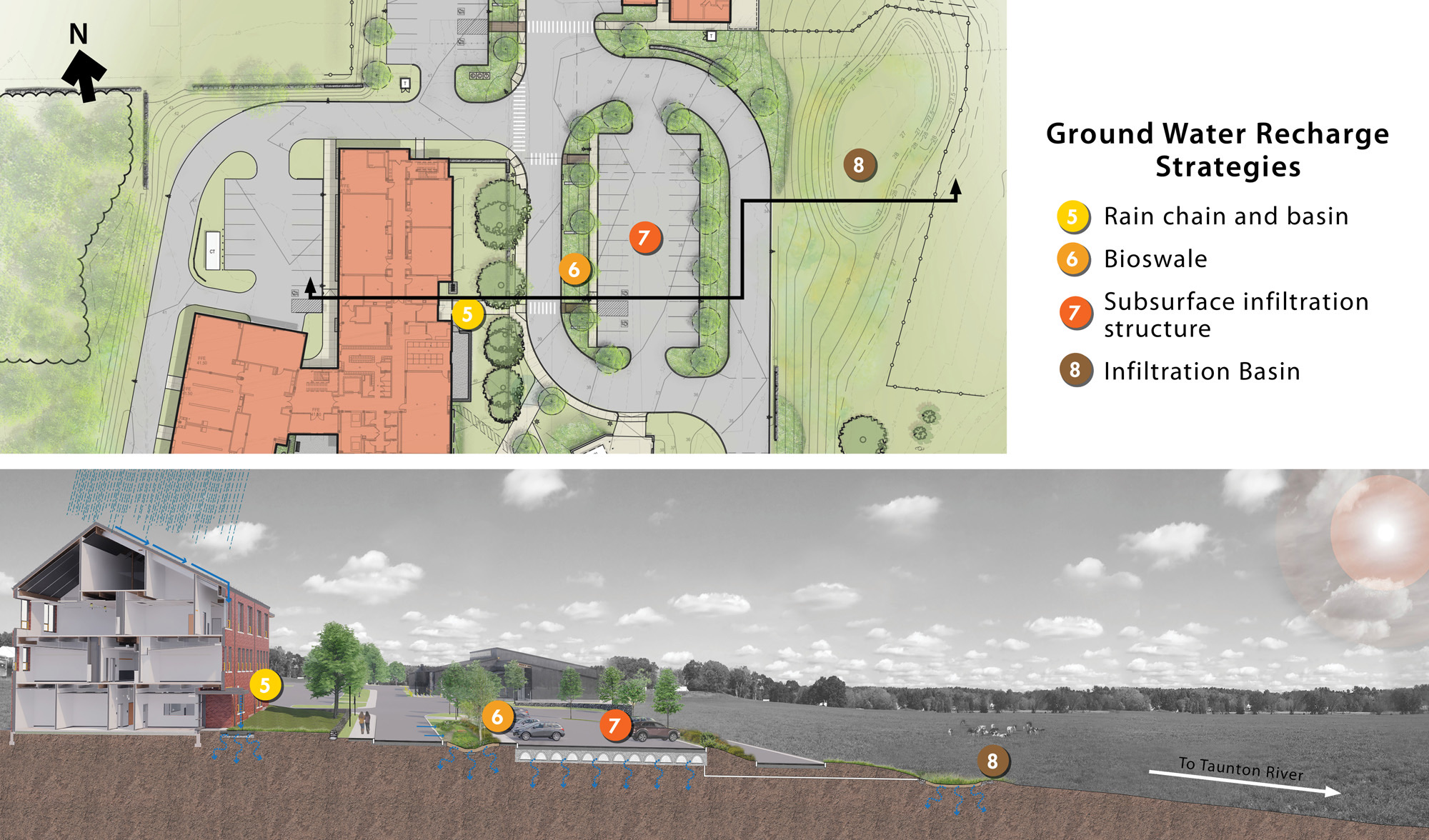
Bristol County Agricultural High School Groundwater Recharge Diagram (HMFH Architects & Halvorson | Tighe & Bond Studio)
Team:
Architects HMFH Architects, Inc.
Landscape Architects Halvorson | Tighe & Bond Studio
Civil Engineer & Site Surveyor Samiotes Consultants, Inc.
Geotechnical Engineering McPhail Associates, LLC
Sustainability Consultant The Green Engineer
Structural Engineer Foley Buhl Roberts & Associates, Inc.
MEP Engineers Garcia Galuska DeSousa Consulting Engineers
Fire Protection Engineers AKAL Engineering
Hazardous Materials Universal Environmental Consultants
Traffic Consultant Green International Affiliates, Inc
Owner’s Project Management Colliers International
Contractor Gilbane


